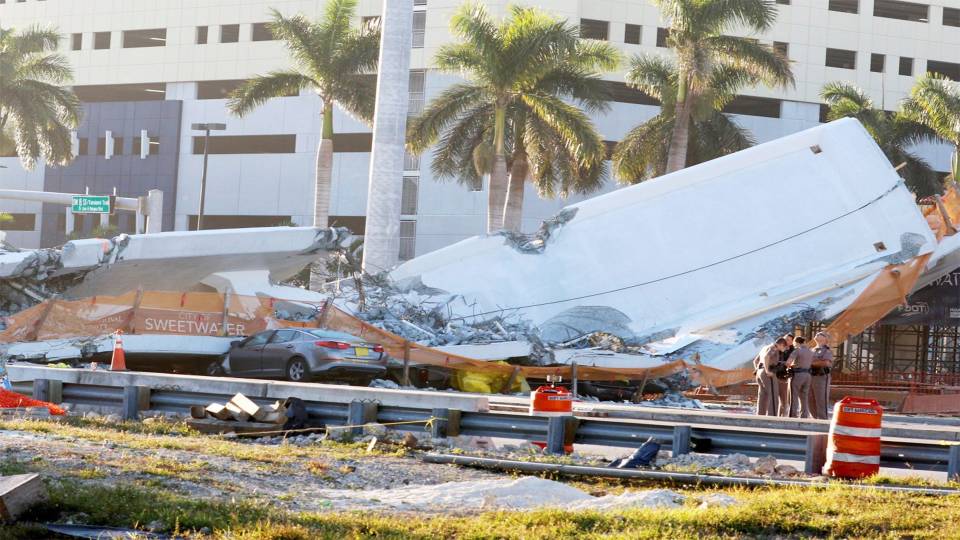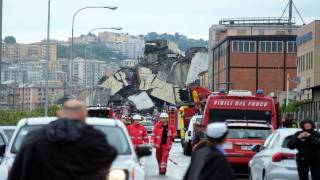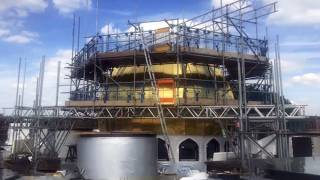Miami Pedestrian Bridge Was Being Adjusted When It Collapsed
The new pedestrian bridge that collapsed in Miami—killing at least six people—had been undergoing work when the 900-ton concrete span crumbled onto the road below, elected officials said Friday.
Lawmakers provided differing accounts of what was happening on the bridge when it collapsed Thursday, leaving among the dead a Florida International University student and a contract employee working at the site. On Friday, rescuers continued sifting through the rubble in search of victims.
U.S. Sen. Marco Rubio (R., Fla.) wrote on Twitter that the engineering firm building the bridge at Florida International University ordered on Thursday that the cables be tightened. “They were being tightened when it collapsed,” he wrote late Thursday.
Other elected officials, including the Miami-Dade County mayor, said they had been informed that a stress test was being conducted at the time of the collapse. University officials didn’t respond to a request for comment.
It wasn’t clear why officials allowed the eight-lane state road underneath the bridge to remain open during the time of the work, or why this work wasn’t scheduled for night hours, when there is little traffic.
“If it’s a critical stage in the construction, why would you keep traffic going under the bridge during that particular step?” said Ted Krauthammer, a University of Florida civil engineering professor who said he didn’t have direct knowledge of the incident.
The Florida Department of Transportation didn’t respond to requests for comment Friday.
The bridge was designed by a Tallahassee, Fla., company, FIGG Bridge Engineers Inc. and constructed by a Miami firm, Munilla Construction Management, or MCM. Both companies said they are cooperating with investigators.
The design proposal for this bridge submitted by MCM, which has experience with bridges, to FIU in 2015 said that after the main span was lowered in place, any “additional work to complete the main span construction will be performed over off peak lane closures.”
Two federal agencies, local police and state attorneys are investigating the collapse.
A team from the National Transportation Safety Board should be on the scene for about a week, NTSB Chairman Robert Sumwalt said. Mr. Sumwalt cited the 2007 collapse of the Interstate 35 bridge in Minnesota, which killed 13 people, as an example of the board’s expertise in catastrophic bridge collapses.
Juan Perez, director of the Miami-Dade Police Department, said his priority was recovering the bodies in the eight cars trapped beneath the rubble, saying he expected more bodies to be found.
Among the victims was Navaro Brown, 37 years old, who worked for Maryland-based Structural Technologies, said Mike Biesiada, a spokesman for the company. The firm supplies structural reinforcements and was at the bridge providing installation support for post-tension hardware, he said. Two other company workers were injured, he said.
Mr. Biesiada said he couldn’t provide details on what the three were doing at the time the bridge came down, citing the continuing investigation.
The bridge is a high-profile example of accelerated bridge construction, a technique that is a research focus at FIU. The construction process has become more popular in the past several years, as a way to minimize traffic disruption. An FIU database of more than 110 such projects include the Willis Avenue Bridge over the Harlem River in New York City.
The bridge’s main 174-foot span had been lifted into place on March 10 in a matter of hours. It had been built alongside the thoroughfare over the course of months.
Orlando lawyer Matt Morgan said he is representing a survivor who was injured during the collapse. He questioned whether the construction had the appropriate safeguards and levels of safety checks that might have been present in a more gradual building process. “We are of the opinion that this tragedy was foreseeable and could have been prevented,” Mr. Morgan said.
MCM is owned by five brothers whose father, Fernando Munilla Sr., was a prominent builder in Cuba before Fidel Castro seized power in 1960 and confiscated his firm, according to its website.






















